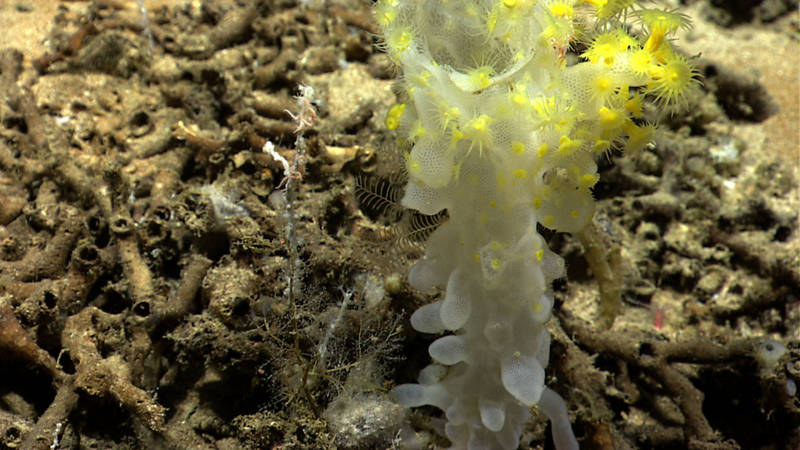The final dive of the 2014 Gulf of Mexico Expedition took place north of Dive 15, in a similar water depth range and investigated deep-sea coral habitat on a second set of bioherms. The dive began at a depth of 533 meters on a sedimented seafloor with coral rubble. On the bioherm east of the second waypoint, a straight seafloor scar up the side of a small mound was clearly man-made; this scar dredged up coral rubble from the subsurface. While transecting the mounds, there was 50-100 percent cover of Lophelia pertusa coral rubble (normal on Lophelia bioherms). A few mounds were 100 percent covered in standing dead coral, with 50-70 percent live coral cover in parts (mostly on the peaks). Deep Discoverer passed areas of exposed hard outcrops on the northern sides of mounds between waypoints five and six. This gave way to a more eroded landscape on the next complex mound and fresh fracture faces of underlying carbonate became more common. A prominent submarine dune composed of rippled sediment occurred at a depth of 478 meters. Corals observed throughout the dive included stony corals, octocorals, and black corals. Other fauna observed were sea pens, sponges, shrimp, squat lobsters, crinoids, sea urchins, sea stars, and bat stars, a Darwin’s slime head, goosefish, hake, rockfish, rattails, scorpion fish, tinselfish, roughskin spurdog, a chain dogfish, several black-bellied rosefish, and a number of individuals from the recently discovered family of soft corals, Aquaumbridae . The dive ended on this high at a depth of ~470 meters.
